Rose Slugs are actually the larvae from a Sawfly. They can create a lot of damage to several deciduous shrubs, especially Roses. Follow this guide to identify and treat Rose Slugs.
What Are Rose Slugs
Rose Slugs, are actually the larvae from a Sawfly, a group of insects related to wasps. Their name and appearance can be misleading because Rose Slugs actually aren’t slugs. They look much more like a caterpillar but aren’t caterpillars either. Instead, they are simply the wormlike larvae of the Sawfly and grow between 1/2” to 3/4”. Their bodies are soft, light green, and slightly transparent.

The 3 most likely types of sawfly larvae you’ll see eating your roses are the European, Curled, and Bristly. It’s the Bristly Rose Slug that are the most destructive for two main reasons. First, they produce several generations (up to 6) of leaf damaging larvae, while the Curled Rose Slug produces closer to 2 generations, and the European only one. This means that the Bristly Larvae will be damaging your rose leaves all season long.
Second, they usually feed on the bottoms of foliage so they can may be missed if only treating the top portions of the leaves.
Rose Slug Damage
Rose slugs chew small holes into leaves, and feed on the soft tissue parts of the leaves. This leads to a kind of skeleton look, see below:
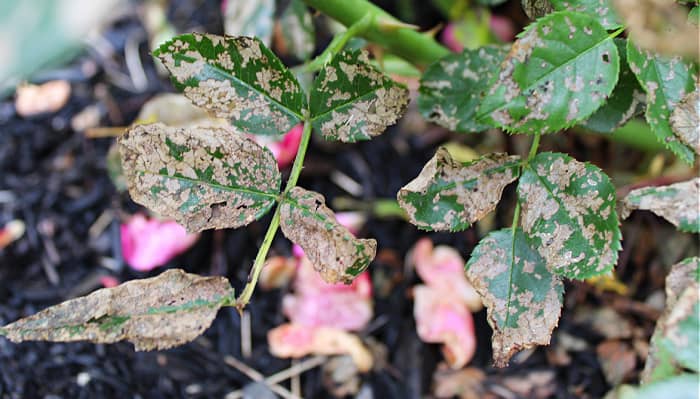
Eventually you’ll see more distinguished holes and large sections of leaves missing as the larvae becomes more mature.
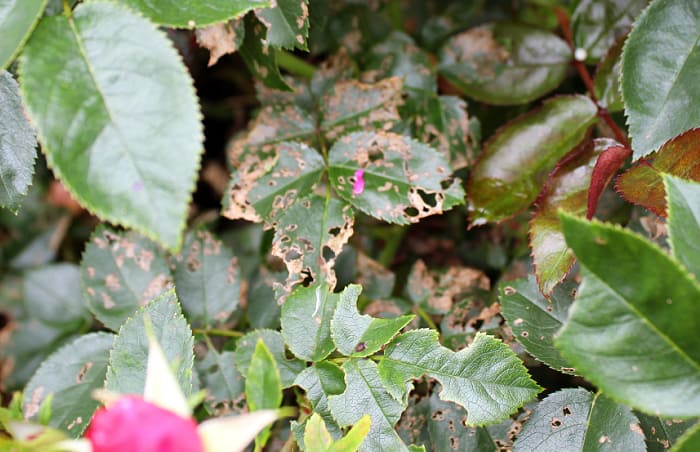
At first glance you may think you have some kind of fungus, but to make a positive ID on Rose Slugs, get down really close and investigate both the tops and bottoms of the leaves inside the plant. Eventually you’ll see the larvae among the damaged leaves.
Lifecycle
Sawflies lay their eggs on the interior leaves and stems of the host plant. When the eggs hatch, the wormlike larvae feed on the soft tissue of the leaves. After several weeks of feeding they drop to the ground and pupate in the soil, similar to a cocoon like chamber. An adult Sawfly emerges from the cocoon and the cycle starts over again. For some types of Sawfly this cycle only happens once a season. Other sawflies like the Bristly have several cycles a season, making them more destructive.
Treatment
Personally, I’ve experimented with insecticidal soaps, and other organic methods such as Neem Oil for killing Rose Slugs. Overall, I have not had luck with these products, and since damage can get bad quickly, especially with the Bristly Rose Slug, I recommend the use of non organic insecticides.
Carbaryl, and Imidacloprid are the 2 insecticides that in my experience do the best job in getting rid of Rose Slugs. These active ingredients are found in a number of different products, but below are my two favorite products you’ll find in the big box stores.
1. Sevin (Carbaryl)
Sevin, Active Ingredient Carbaryl, Is my favorite product for treating Rose Slugs. What I like about it most is it’s a quick solution, and it’s very effective. You simply spray the leaves, both the tops and bottoms, and it kills Rose Slugs on contact, or when they ingest the leaves. I usually find that one application of Sevin is all I need to get rid of Rose Slugs. A day after spraying, look at the interior of the plant and you’ll probably see the dead Rose Slugs.
2. Bonide Rose RX Systemic Drench (Imidacloprid)
Bonide Rose RX Systemic Drench, with Active Ingredient Imidacloprid, is another great product for treating Rose Slugs. This product also contains fungicides to help protect against fungus problems which is an added bonus. This product works differently than a contact killer such as Sevin. Instead of killing on contact, The Bonide Rose RX gets applied to the base of the plant as a soil drench. It then gets absorbed by the roots of the plant and travels throughout the cells of the plant. When the Rose Slugs eat the leaves, they are poisoned.
Since Imidacloprid needs to work its way through the cells of the plant to be effective, it takes longer for it to do its job. However, since the insecticide isn’t on the surface of the plant it becomes rain proof and overall one treatment will give you longer lasting results.
Check Out These Posts Next
Follow Me
Join my free email list!


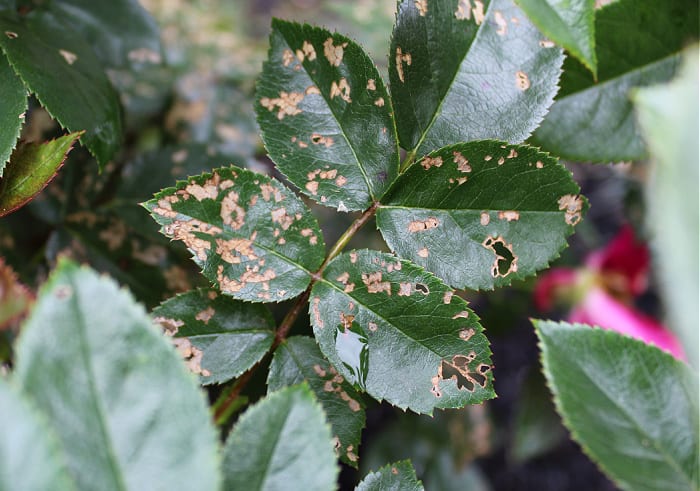
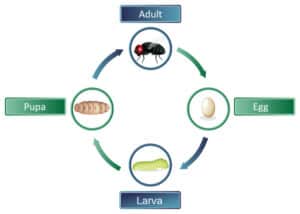


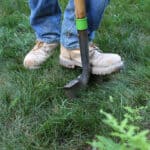


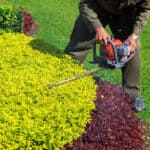
I just bought my first rose EVER and I found these eating my baby leaves! Thank you for your expertise!
You’re very welcome, good luck Tricia!
One of my rose bushes has been stripped of leaves by these caterpillars. I will get the products you recommend but also do I need to treat the soil to get rid of any pupae in the ground . Thanks for your article, it is very informative.
You’re very welcome Bernie. I wouldn’t do any kind of soil drench, just stick to treating the rose slugs on the leaf and that’ll eventually put a dent in the population.